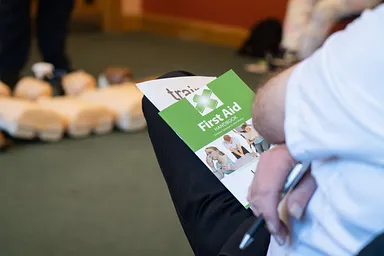Open fractures are also referred to as compound fractures whereby the broken bone penetrates the outer skin. These are incredibly painful and serious injuries, which require urgent assistance from medical professionals. A little first aid knowledge can help whilst awaiting for help to arrive.
What is it?
An open fracture is in essence the same as a closed / simple fracture, whereby the bone has broken and separated. The main difference is that due to the angle of the break /severity it penetrates the skin and the bone can be seen protruding through the skin.
Signs / symptoms
At first the open fracture may not be visible. It's useful to perform a scene survey and communicate with the casualty. They will often be in extreme pain and if conscious will typically tell / point to the affected area. When unconscious a full secondary assessment would be required to ascertain the site of any potential fractures.
Look out for the following signs and symptoms when assessing the casualty:
- Casualty describing extreme pain on a limb
- Bone protruding through the skin
- Blood oozing out of the site of the fracture
- Hypovolaemic shock
- Unconsciousness
Treatment
The first aider should always look to immobilise the casualty. Call 999 /112 stating your location and that you have a casualty with a suspected open fracture.
The first priority is to ascertain if there is any major bleeding at the site of the fracture. It’s rare, but if large volumes of blood are gushing out of the wound or blood is pulsating out, then update 999 / 112 with this information.
In normal circumstances small / moderate amounts of blood will be visible leaving the wound. This bleeding should be controlled in a careful manner. A casualty with a broken leg / arm could report pain levels of 9/10 or 10/10. The sort of pain that can make a person temporarily lose consciousness. In light of this any bleeding should be controlled by pressing bandage (with caution) either side of the wound, and not directly over it. In the absence of major / catastrophic bleeding this will help minimise infection and in essence patch the casualty up until they can be seen to by qualified medical professionals.
Helpful hint - Moist gauze can be applied over an open fracture to keep it clean. At the very least make sure the site of fracture is not in direct contact with the ground.
.jpg)

.jpg)
.jpg)